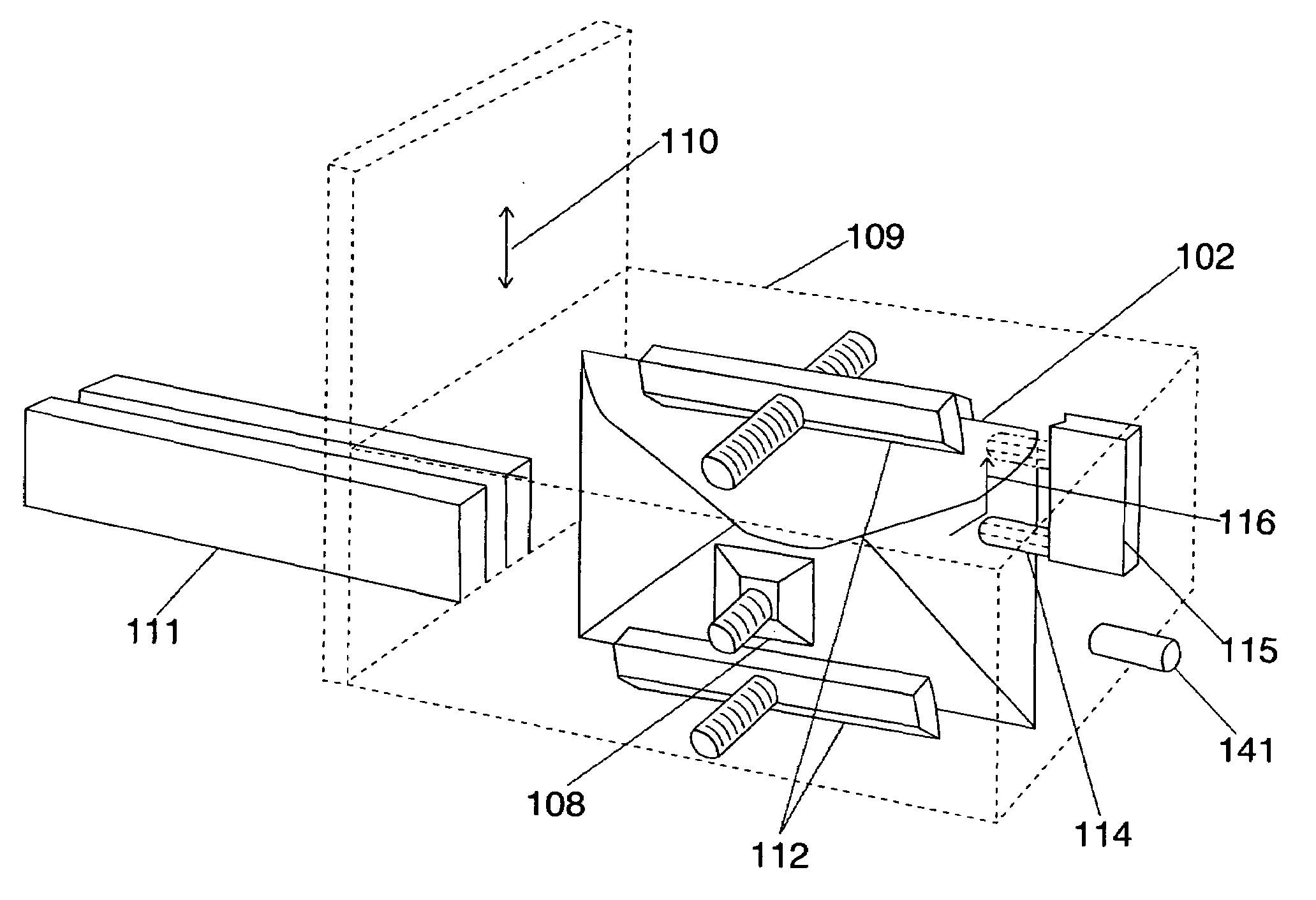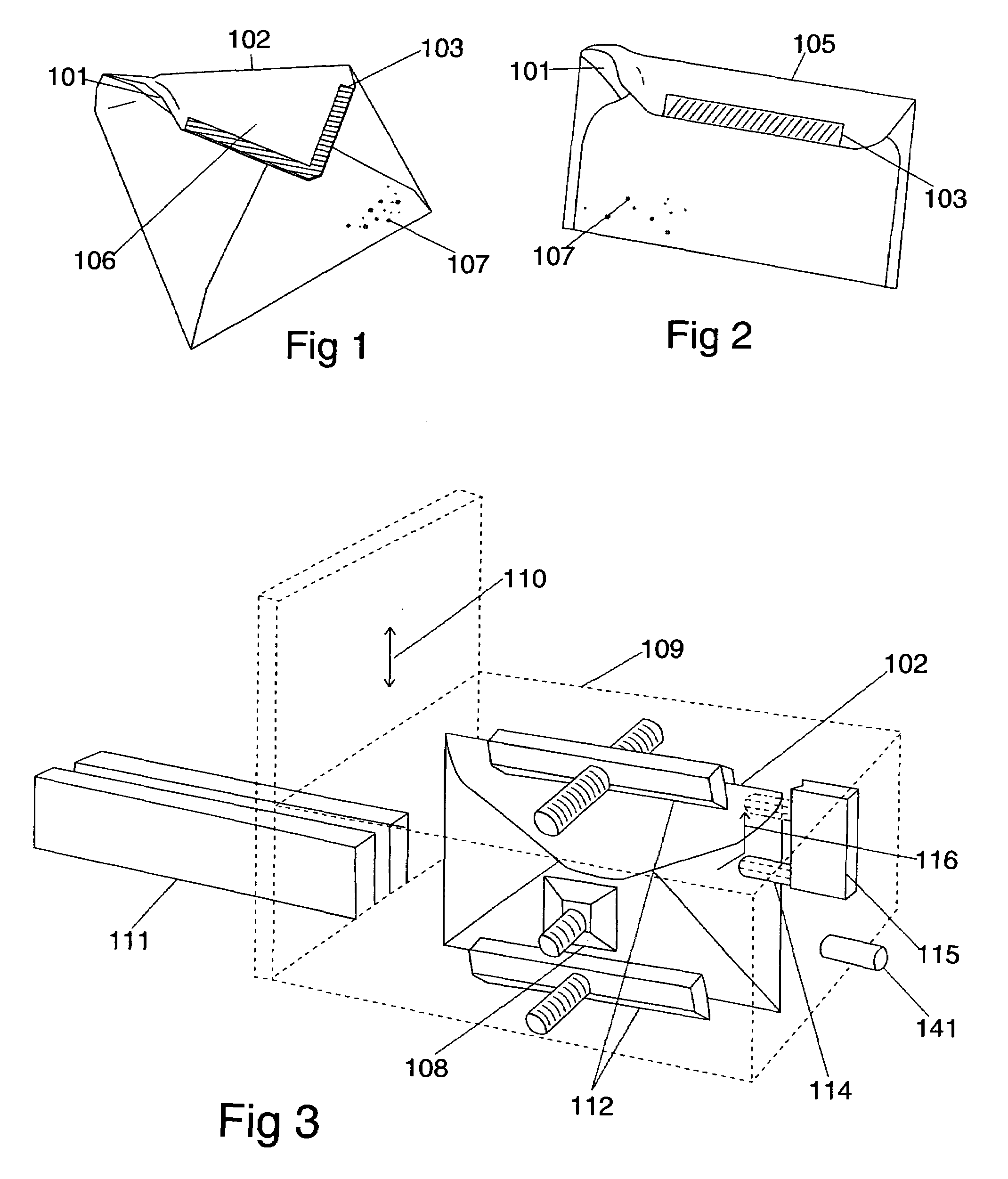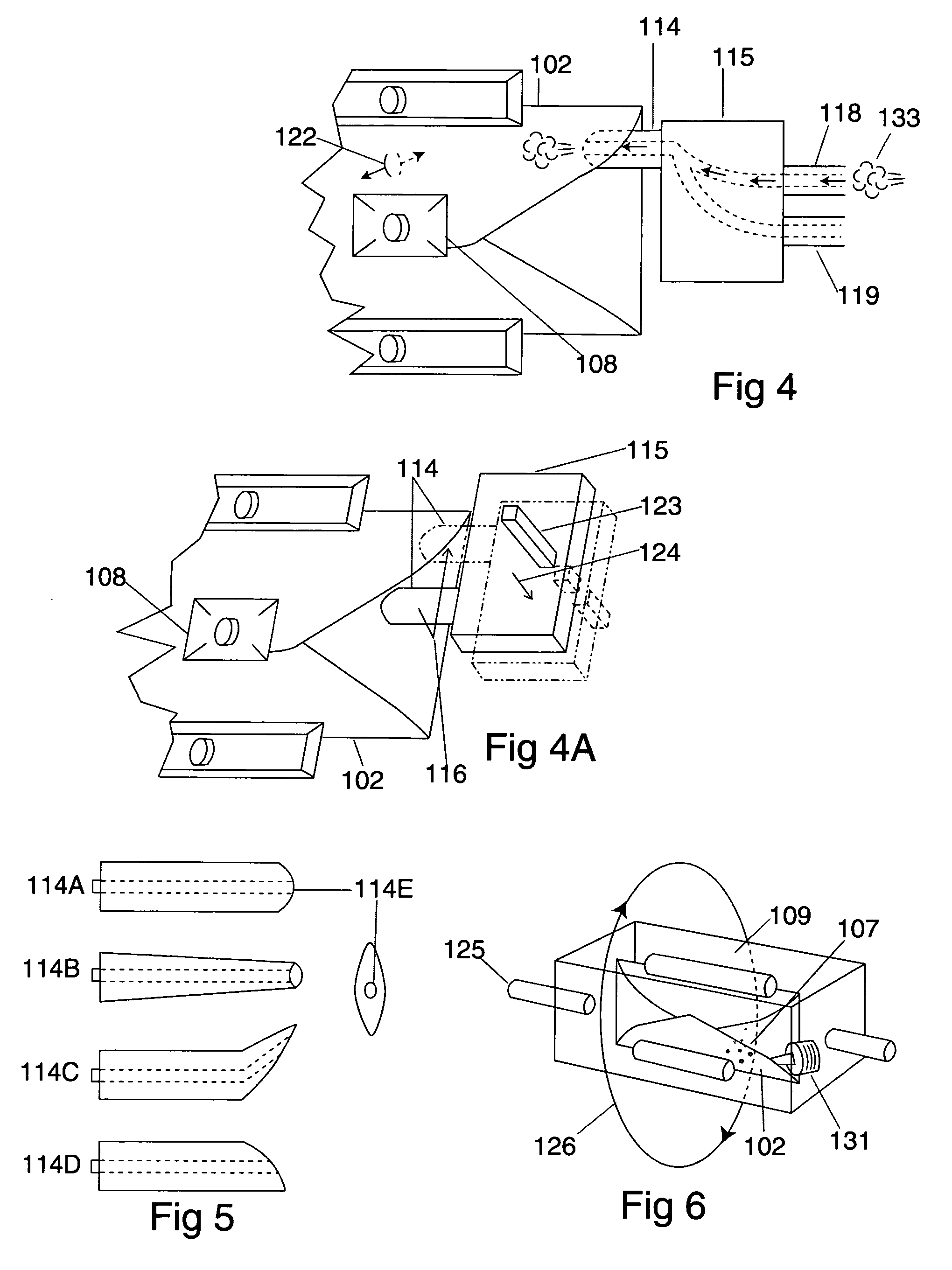Package biochemical hazard and contraband detector
- Summary
- Abstract
- Description
- Claims
- Application Information
AI Technical Summary
Benefits of technology
Problems solved by technology
Method used
Image
Examples
Embodiment Construction
[0075]As depicted in FIG. 1 and FIG. 2, the vast majority of envelopes or packages used in the US have small gaps or openings on the top corners where edges come together that can be probed without unsealing the subject. Opening 101 still exists even when flap 106 on envelope 102 or package 105 is closed and sealed.
[0076]In FIG. 2, an adhesive area 103 does not extend all the way out to the corner edge of the envelope. This creates the gap above, which exists to vent air in and out when being handled. Without it, the envelope will not flatten as trapped air creates ballooning, which will then cause problems as it travels through the processing plants. The small opening is well concealed and covered by the flap. This cover usually keeps possible hazardous and contraband particles 107 trapped inside the envelope.
[0077]As shown in FIG. 3, envelope 102 travels by conveyer belt mechanism 111 or gloved human hands to an airtight container 109, which is a box in this embodiment. Once insid...
PUM
 Login to View More
Login to View More Abstract
Description
Claims
Application Information
 Login to View More
Login to View More - R&D
- Intellectual Property
- Life Sciences
- Materials
- Tech Scout
- Unparalleled Data Quality
- Higher Quality Content
- 60% Fewer Hallucinations
Browse by: Latest US Patents, China's latest patents, Technical Efficacy Thesaurus, Application Domain, Technology Topic, Popular Technical Reports.
© 2025 PatSnap. All rights reserved.Legal|Privacy policy|Modern Slavery Act Transparency Statement|Sitemap|About US| Contact US: help@patsnap.com



